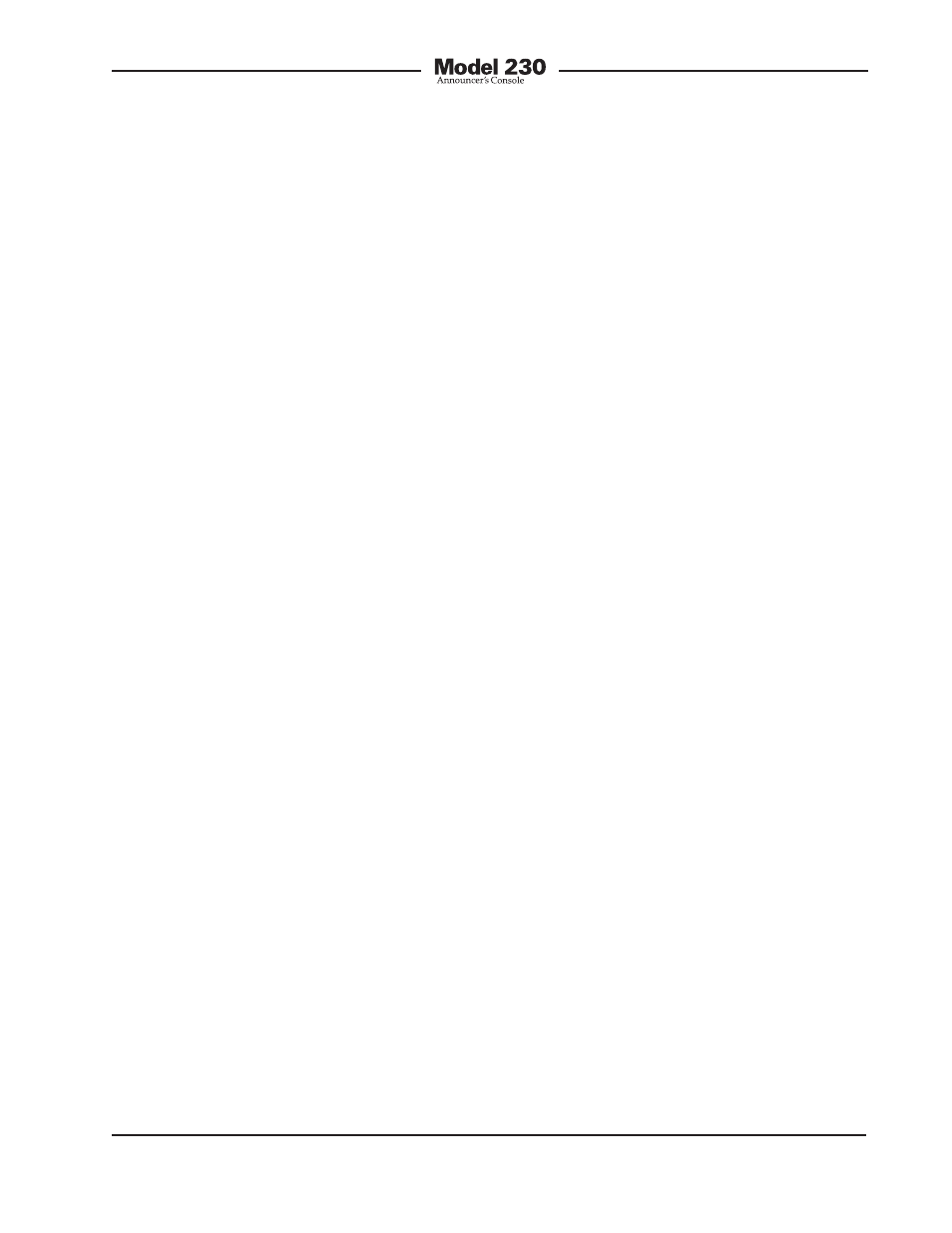Phantom power – Studio Technologies 230 2014 User Manual
Page 37

Model 230 User Guide
Issue 9, November 2014
Studio Technologies, Inc.
Page 37
as the BP325 was very good, limiting the
maximum level to at most 10 dB above the
nominal. The nominal audio level associ-
ated with a Clear-Com system was harder
to characterize. It appeared to be a few dB
less than –10 dBu, but the dynamic range
was much larger. Level peaks of 10 to
20 dB over nominal were easy to produce.
This objective data led to the following
Model 230 design decisions. When audio
from intercom channels 1 and 2 was used
as headphone cue sources, level sensitiv-
ity selection switches or trim pots were not
required. The level-range available on the
Model 230’s front-panel controls proved
to be sufficient for the user to be able to
establish the desired listening level. When
talkback audio was routed to the intercom
channels a fixed level for use with both
RTS and Clear-Com systems also proved
to work well. This was mainly possible due
to the excellent dynamic-range-control
provided by the compressor circuit. Its
threshold (2 dB above Model 230 internal
nominal level) and compression ratio (5:1)
resulted in excellent talkback-to-intercom
audio. So in the end, no level or compat-
ibility switches of any kind were required
to achieve the desired “listen” and “talk”
performance.
The above paragraphs may elicit howls
of protests from a host of engineers and
intercom system experts. But for years
we’ve heard differing reports as to the
actual nominal audio levels for RTS and
Clear-Com systems. The “in-the-know
cats” agreed that RTS TW intercom (and
IFB) was –10 dBu, a value that we con-
firmed in our tests. But the nominal level
for Clear-Com was variously reported as
–20, –15, –12, –10, and “you know, the
Clear-Com level!” It’s most likely that
early Clear-Com systems did use a nomi-
nal level in the –20 dB range. But after
making controlled tests, the contemporary
equipment seemed to be much closer to
–10 dBu. And with the limited dynamic-
range control that we experienced, the
actual level during operation may vary
widely. That’s why intercom interface
sensitivity, compatibility switches, or
rotary controls were not included in the
Model 230. But just in case a change is
ever required, key intercom interface
gain levels are set using socketed resistor
pack devices.
In conclusion, the engineers at Studio
Technologies are always open to learn-
ing more. Additional information from the
field concerning such topics as intercom
system levels, impedance matching, and
DC power sourcing would be welcomed.
Stopping by our offices for an in-person
chat would be also great. (And bringing
along pizza and beer for a tech-talk ses-
sion would certainly get our attention!)
Just park the production trailers on the
street!
Phantom Power
The Model 230 provides a 48 volt nomi-
nal source of phantom power to support
condenser microphones. It’s designed to
meet the P48 requirements as specified
in the IEC 61938 standard. The circuitry is
very simple: 6.85 k ohm resistors provide
a path from a 45 volt DC source to pins 2
and 3 of the microphone input connector.
The resistors and the power source
work together to provide the required
48 ±4 volts, up to a maximum current
of 10 milliamperes.
